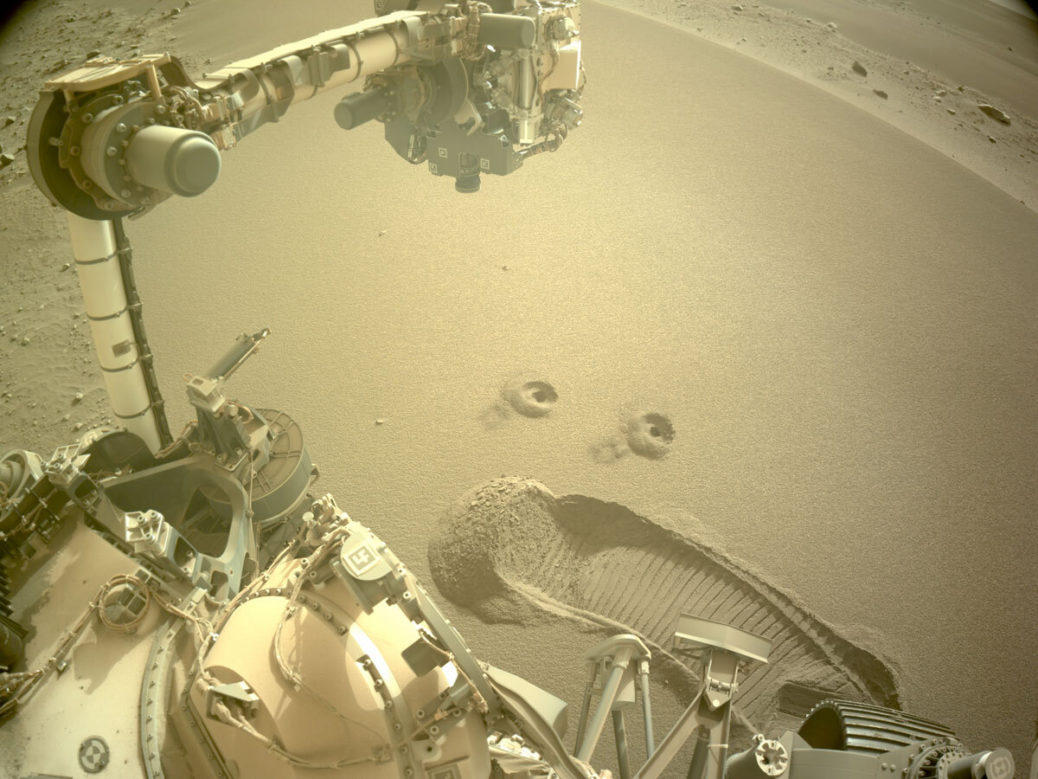The mission’s first two samples of regolith – broken rock and dust – could help scientists better understand the Red Planet and engineers prepare for future missions there.

The mission’s first two samples of regolith – broken rock and dust – could help scientists better understand the Red Planet and engineers prepare for future missions there.
NASA’s MAVEN mission and the United Arab Emirates’ Hope Probe mission are paving the way toward greater scientific collaboration...
Now uncocooned from its protective carbon-fiber shield, the helicopter is being readied for its next steps. Read More
With the first episode available now, Season Four shares the personal stories of the people who’ve helped put NASA’s...
The rover found that Jezero Crater’s floor is made up of volcanic rocks that have interacted with water. Read...
Scientists found evidence that a region of northern Mars called Arabia Terra experienced thousands of “super eruptions,” the biggest...
A livestream will begin at 3:15 a.m. PDT that morning as the helicopter team prepares to receive the data...
Both scientists and the public can navigate a new global image of the Red Planet that was...
When the Perseverance rover safely touched down on the Martian surface, inside Jezero Crater, on Feb. 18, 2021, it...